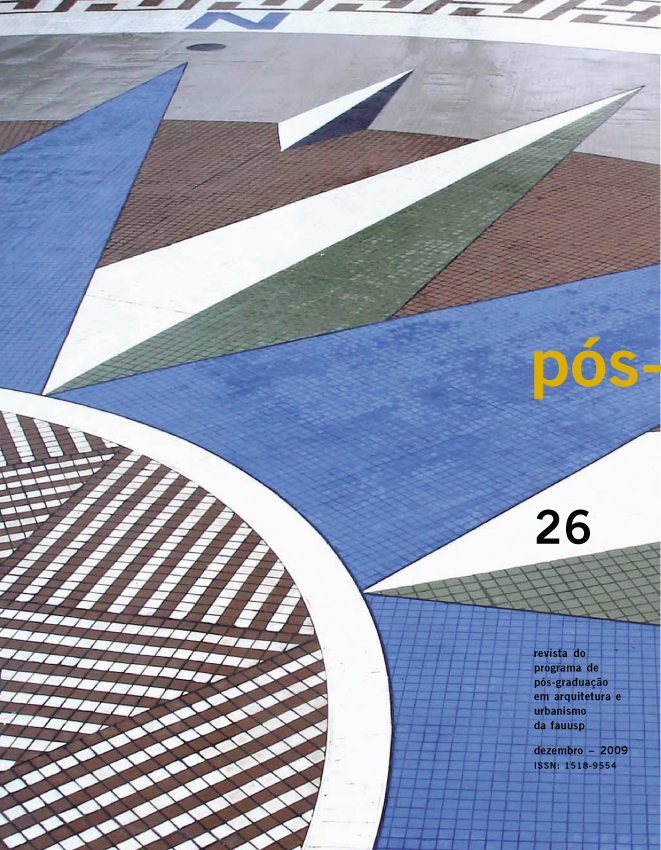Compulsory subdivision, construction, and utilization of land: an instrument (still) under construction
DOI:
https://doi.org/10.11606/issn.2317-2762.v0i26p34-49Keywords:
Urban planning, urban laws, master plan, urban policy, urban managementAbstract
This paper analyzes the application of the compulsory subdivision, construction, and utilization of land, which requires owners to comply with the social function of urban properties. The article discusses the structural regulatory framework under the Brazilian Federal Constitution and the City act (Federal Law n. 10257/01) governing this legislation, as well as the specific case of Santo André, a municipality in the São Paulo metropolitan region. In 2006, Santo André began to notify owners of vacant and underutilized land, using specific criteria and procedures in the regulation and application of the above legislation. By the end of 2008, nearly 26 percent of the owners of all selected properties were notified, with about 65 percent located in the area of the Tamanduateí Axis. The monitoring process that took place from 2006 to 2008 identified several hurdles in the application of this instrument, such as legal, title, and record issues, the governability of local stakeholders, and difficulties in combining requirements such as subdividing and building in restricted-zoning areas. The Santo André experience also provides material for discussion of the frailness of the pact built to apply this instrument during the preparation and approval phases of the city's master plan as well as for understanding several issues that might be common to the urban policies of cities opting to use this legislation.Downloads
References
ALFONSO, Luciano Parejo. Derecho urbanístico: Instituciones basicas. Mendoza: Ediciones Ciudad Argentina, 1986.
BRASIL – Ministerio das Cidades – Confea. Pesquisa Plano Diretor Participativo. Disponível em: http://www.cidades.gov.br/secretarias-nacionais/programas-urbanos/biblioteca/plano-diretor/publicacoes-institucionais/PesquidaPDPparaOComite102007.pdf/view. Acesso em: 30 ago. 2009.
BUCCI, Maria Paula Dallari. Direito administrativo e políticas públicas. São Paulo: Saraiva, 2002.
BUENO, Vera Scarpinella. Parcelamento, edificação ou utilização compulsórios da propriedade urbana. In: DALLARI, Adilson Abreu; FERRAZ, Sérgio (Coords.). Estatuto da cidade – Comentários à Lei Federal n. 10.257/2001. São Paulo: Malheiros, 2002.
FERREIRA J. S. W.; UEMURA, M. Política urbana. In: DENALDI, R. (Org.) Ações integradas de urbanização de assentamentos precários. Brasília: Ministério das Cidades, 2009.
FUNDAÇÃO PREFEITO FARIA LIMA – CEPAM. Parecer Cepam 25.523. São Paulo: Cepam, 2006.
FUNDAÇÃO JOÃO PINHEIRO. Déficit habitacional no Brasil. Brasília: Fundação Horizonte, 2006.
MARICATO, E. Metrópole na periferia do capitalismo. Ilegalidade, desigualdade, e violência. São Paulo: Hucitec, 1996a.
MARICATO, E. Brasil, cidades alternativas para a crise urbana. Rio de Janeiro: Vozes, 2001.
PINTO, Victor Carvalho. Do parcelamento, edificação ou utilização compulsórios. In: MATTOS, Liana Portilho (Org.). Estatuto da cidade comentado. Belo Horizonte: Mandamentos, 2002.
SANTO ANDRÉ (município). Plano Diretor Participativo (Lei Municipal n. 8696/2004). Santo André: Prefeitura, 2005.
SANTO ANDRÉ (município). Lei Municipal n. 8869/2006. Santo André: Prefeitura, 2006.
SOUZA, Marcelo Lopes de. Mudar a cidade – Uma introdução crítica ao planejamento e à gestão urbanos. 2. ed. Rio de Janeiro: Bertrand Brasil, 2003.
VILLAÇA, Flávio. Uma contribuição para a história do planejamento urbano no Brasil. In: DEÁK, Csaba; SCHIFFER, Sueli R. (Org.) O processo de urbanização no Brasil. São Paulo: Edusp, 1999.
Downloads
Published
Issue
Section
License

This work is licensed under a Creative Commons Attribution 4.0 International License.
DIADORIM - Diretório de Políticas Editoriais












